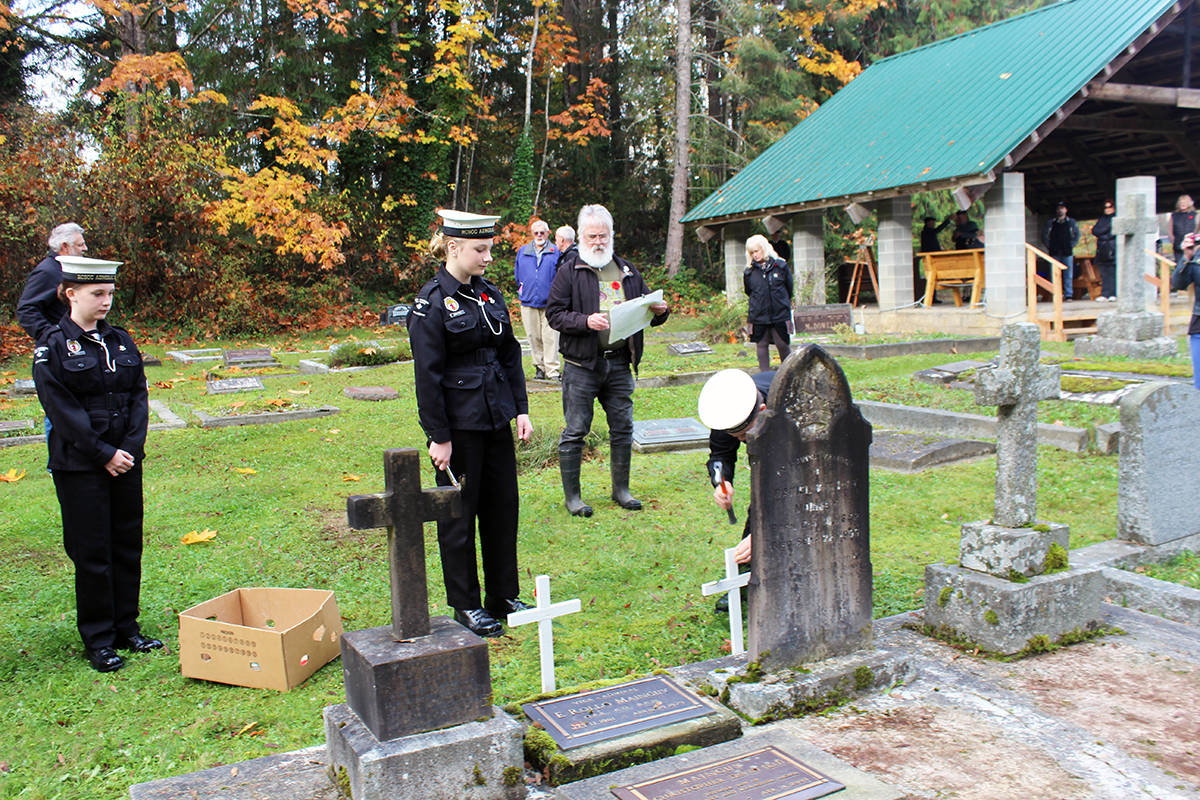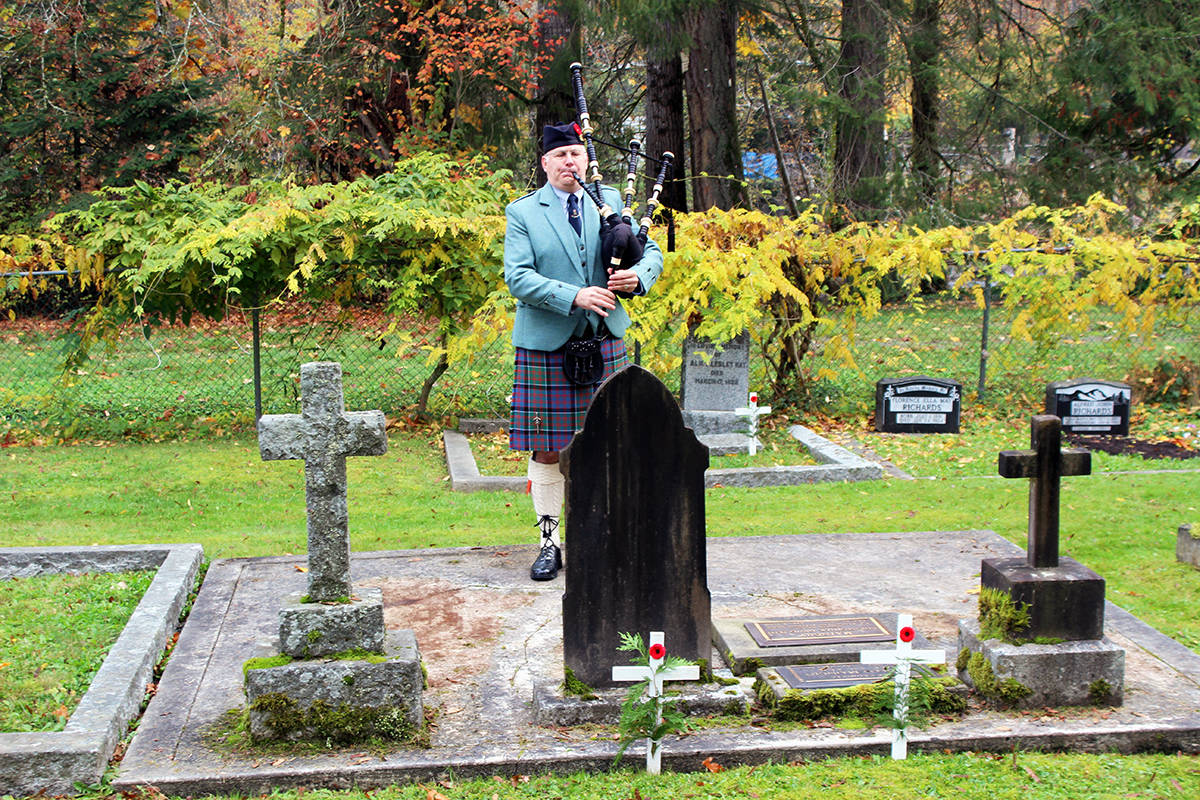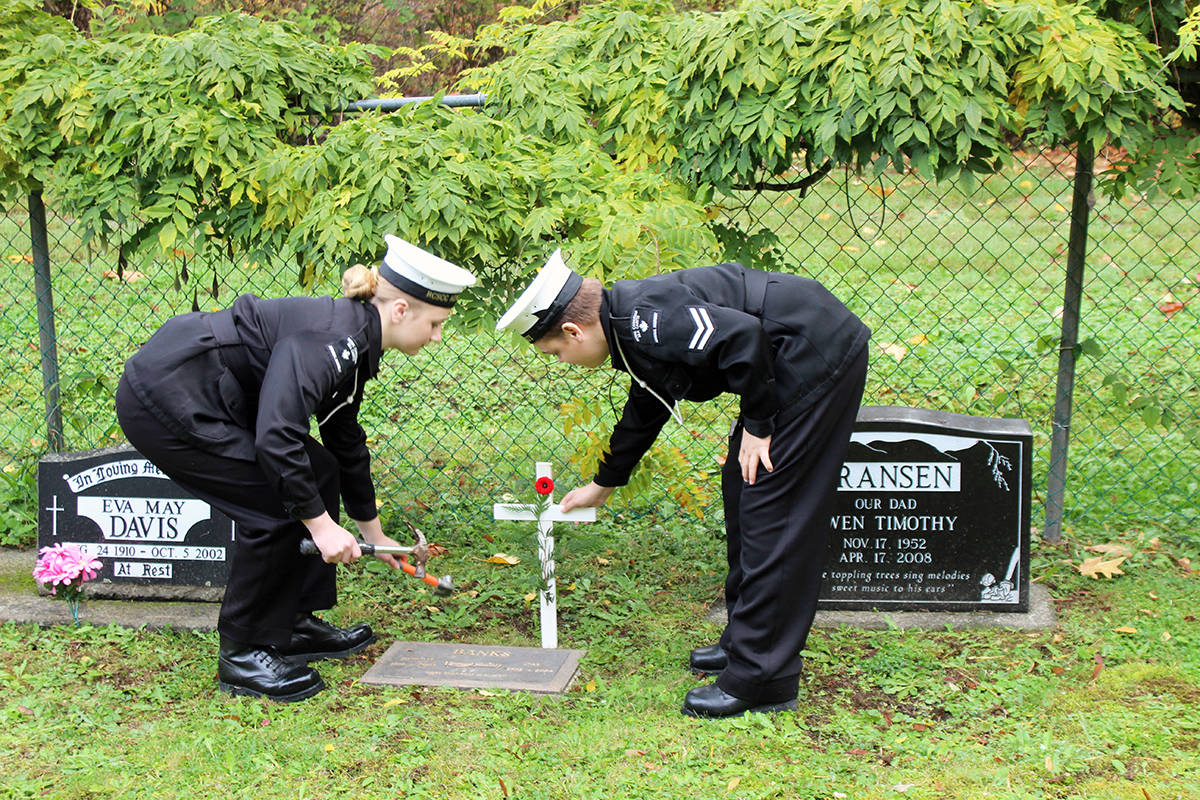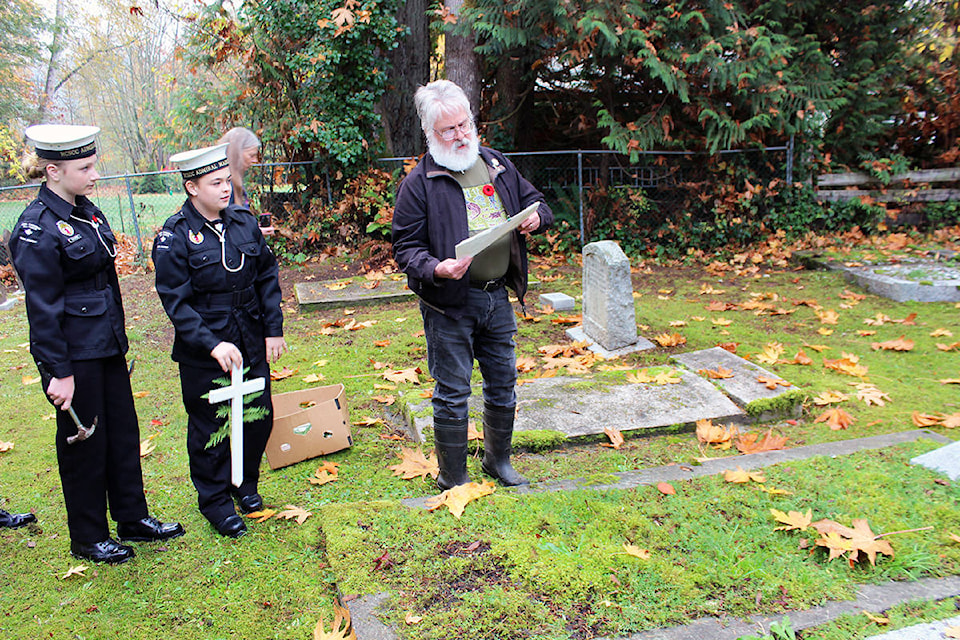It’ll be 100 years this Remembrance Day since the guns fell silent on Nov. 11, 1918 to end The First World War. Special significance has thus been attached to ceremonies in the Cowichan Valley this year to place crosses at the gravesites of veterans from both the First and Second World Wars, including Westholme.
A Saturday morning ceremony featured members of the 100 Royal Canadian Sea Cadet Corps Admiral Mainguy, led by their C.O., Lt. (N) Nolan Stewart, placing 34 crosses on the graves of veterans in the historic All Saints’ Anglican Church cemetery near the Chemainus River.
This included placing a cross and giving a formal salute to their respected namesake, Westholme-born Vice-Admiral E. Rollo Mainguy (1901-1979), of the Royal Canadian Navy.
According to organizer and spokesman Mike Bieling, November 2018 marks the 92nd anniversary of the Cowichan Valley Remembrance tradition of having Armed Forces cadets and other volunteers place a small, white cross, decorated with a lapel poppy and sprig of cedar and delivered with a smart uniformed salute, on the grave of every known veteran in our community cemeteries.
He constructed the commemorative crosses himself.
Family members of the veterans and the public turned out to honour the service and sacrifice of the Valley’s veterans, and to appreciate how today’s cadets and volunteers continue to respect this 92-year-old local custom.
Bieling noted the first Armistice Day observation was authorized by King George V to mark November 11, 1919, in remembrance of the service men and women who fell during the conflict, and the practice was quickly adopted across the British Empire.
Early Armistice Day services, he added, were often held in local cemeteries, in which numbers of returned wounded veterans were already being interred. When the Royal Canadian Legion was founded in November, 1925, orders defined its Armistice Day service as a cemetery-based ceremony, and local tradition holds these were organized at St. Peter’s Church, Quamichan, and St. Ann’s Church, Tzouhalem, from 1926 onward.
Bieling indicated when the cenotaph now in Charles Hoey Park was erected in Duncan during the 1930s, the Legion’s Remembrance Day observations shifted to that location and focused more explicitly on veterans who fell and were interred overseas, rather than on those who had survived and returned to live out their days at home.
“This encouraged Legion volunteers in branches across the country to continue with the cemetery cross placements to honour all who had served, and the Duncan branch was one of these,” Bieling pointed out.
Mountain View Cemetery, Somenos, was established in 1955 as a municipal burial ground with a Legion section reserved for veterans, and Legion volunteers brought the remembrance cross placements there. A total of 445 crosses were set up and saluted at Duncan’s Somenos cemeteries Sunday.
“My contribution over the years has been to keep adding to it,” said Bieling of the other Cowichan Valley sites to commemorate veterans.
Chemainus Remembrance Day services are at 11 a.m. at the cenotaph across from the Chemainus United Church on Sunday, Nov. 11.



